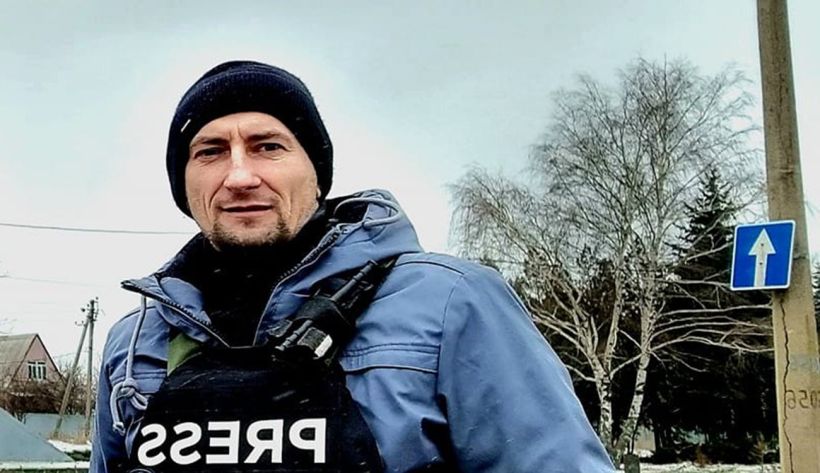
Championing Truth in Adversity
November 9, 2025
French Government Faces Criticism Over Inaction After Photojournalist’s Death
November 9, 2025November 09, 2025 – Ukraine/Russia –
On November 8, 2025, a Russian FPV drone struck a humanitarian evacuation vehicle belonging to the aid organization Proliska in Donetsk Oblast, Ukraine. The attack occurred near Kostiantynivka as the team, which included volunteers and two foreign journalists—an Austrian reporter from ORF and a Spanish correspondent—was returning from delivering aid in the front-line area. The vehicle, a white armored SUV marked with Proliska’s emblem and a clear humanitarian sign, was hit at the entrance to the town of Novoselivka.
According to eyewitness accounts from Proliska’s regional head, Yevhen Tkachov, the attack took place just moments after the vehicle turned onto the main road. A fibre-optic FPV drone appeared suddenly, flying only 10–15 meters away before striking the vehicle with a shaped charge. The explosion pierced the hood and destroyed part of the emblem on the roof but narrowly missed the passenger compartment, sparing the lives of all onboard. The volunteers and journalists escaped unharmed, though the incident left the vehicle severely damaged.
Reports from Ukrainian media, including Pravda, NV English, and Euromaidan Press, confirm that the attack was not a random strike but appeared to be a deliberate targeting of a humanitarian vehicle despite its visible markings. Proliska emphasized that the team had been engaged in an official mission under international humanitarian protocols and that the drone’s precision suggested real-time operator control rather than misfire. Ukrainian authorities condemned the attack as a violation of international law, describing it as part of Russia’s escalating campaign of intimidation against aid workers and the press.
The damaged vehicle was later evacuated from the site for repairs. Ukrainian security services are collecting debris for forensic analysis to trace the drone’s manufacturer and operator, with evidence pointing toward a fiber-optic-controlled FPV drone of Russian origin.
The attack underscores the increasingly perilous conditions faced by both humanitarian staff and journalists operating in eastern Ukraine. It also highlights the growing weaponization of drones against clearly identified non-combatants—raising renewed concerns over the erosion of protections guaranteed under the Geneva Conventions for both humanitarian and media missions in conflict zones.
Reference –



